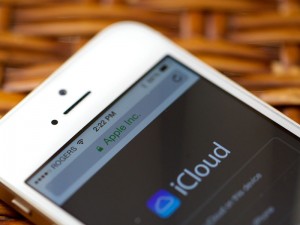Early in 2014, Apple evoked an aggregate heave from the security group when they made some updates to iOS 6 and iOS 7 to end a vital TLS bug. The updates and fixes were short on such an important thing; however they unquestionably made it sound like Apple’s TLS usage was softened up a genuinely discriminating way. As it happens, the bug was in a part of Apple’s working frameworks that is discharged as open source, so it didn’t take long for somebody to find the accurate issue.
Before you read any further amount of this, on the off chance that you haven’t as of now done this, please go upgrade your iOS device to the most recent framework renditions. You can do this through iTunes or straightforwardly from Settings then General then Software Update.
What’s the TLS bug exactly?
We have done some exploration to locate some info about this bug, in the event that you’d like to see the genuine code. The short form is that in specific situations, Apple’s TLS execution was neglecting to approve the character of the system on the flip side of a connection, (for example, HTTPS site). This does not imply that the association isn’t encoded any more. For instance, in case you’re perusing the EFF’s safe site, somebody on the same system watching movement pass by will be obstructed from perusing behind you generally as viably as some time recently.
So what’s the major ordeal? Most of us know that encryption is not a panacea, but rather simply a helpful instrument. One of the things that are oftentimes misjudged about TLS bug is that it performs two basic and integral capacities, stand out of which is encoding your information. The second is validation, or checking that you’re giving your scrambled information to the connection. On the off chance that you attempt to give your Visa to a certain website however you’re really sending it the unknown then the majority of the encryption on the planet won’t help you.
One might say, the two sides of TLS shield you from two unique things: the verification shields from specifically uncovering data to the wrong individual, and the encryption shields protects you from by implication uncovering data to other people along the way. On the off chance that validation is broken, then complex gatherings in that “others” classification don’t have to sneak in and take your information. Like a certainty trick, they simply need to persuade you that you’re conversing with another person and you’ll let them know whatever they need to know.
More Explanation
A second decent lesson from this disclosure is that things turn out badly. Now and then it’s in little routes, for example, the dark and marginal hypothetical vulnerabilities that are intermittently found in any convention, TLS included.
Here and there they’re novel assaults that exploit usage idiosyncrasies that nobody had given much however to some time recently, for example, measuring the time it takes for a server to reject a wrong request. Also, now and then they’re enormous usage disappointments like this one.
Bad things happen and it’s great to have a reinforcement arrangement. That may mean being in a position to save your device or advancements when something falls flat. This bug influences the present rendition of OS; however it can be in part alleviated by changing to a non-Apple program, similar to Chrome, until it’s discharged. Keep in mind, however, that TLS is utilized by loads of things other than your apps, so that just goes in this way.
In the event that Apple permitted us to arrange the conduct of OS’s TLS execution, those of us aware of present circumstances could at any rate update the devices to the modes that are unaffected by this bug if not we have sit tight for the official upgrade. As far as anyone is concerned, there’s no real way to do this.
Obviously, far superior to a reinforcement arrangement is having different layers of security that can cover for one another. Back in the beginning of building a cover for OS, we needed to include an element that would permit movement with its own particular security properties, for example, HTTPS and SSH. In knowledge of the past, it may be great that this demonstrated hard for us to manufacture. On a basic level, utilizing a cover to ensure a HTTPS association is somewhat inefficient.
Obviously, if your HTTPS customer has broken validation, then utilizing a cover to considerably decrease the amount of people who may take advantage of that fact will looks like a great plan.
What about the code?
A captivating note on this entire occasion is that the softened code up inquiry was in the open-source bit of Apple’s working system. It would be fascinating to know how this defenselessness was found, yet that doesn’t appear to have been revealed yet. The imperfection is sufficiently clear that any designer perusing the code would have a decent risk of seeing something awry. It’s likewise the kind of thing that is liable to be grabbed by a static analyzer or a distrustful compiler.
Right now, we can just say a couple of things without a doubt. One is that there are various devices and methods that Apple could have been utilizing to accept this segment of the code that they weren’t. It’s conceivable that Apple’s advancement forms themselves need further examination.
Regardless of Apple’s short depiction in the product overhaul, we now know the exact way of this bug and can attempt to make moves to relieve it while the any OS device is updating. We absolutely trust that this disappointment will animate a considerable measure of extra investigation, on this bit of programming that things being what they are a large number of us have been depending on them pretty intensely regardless of the danger some may cause.



